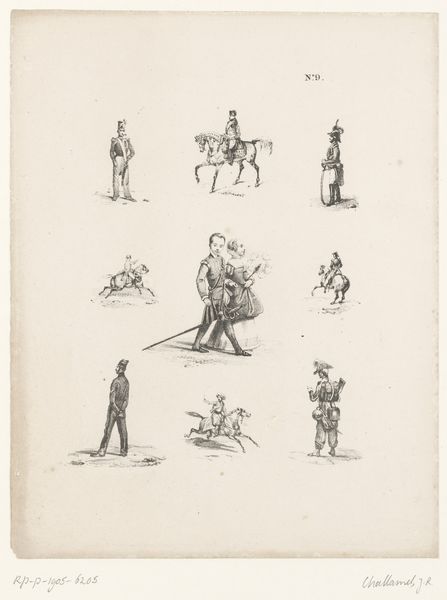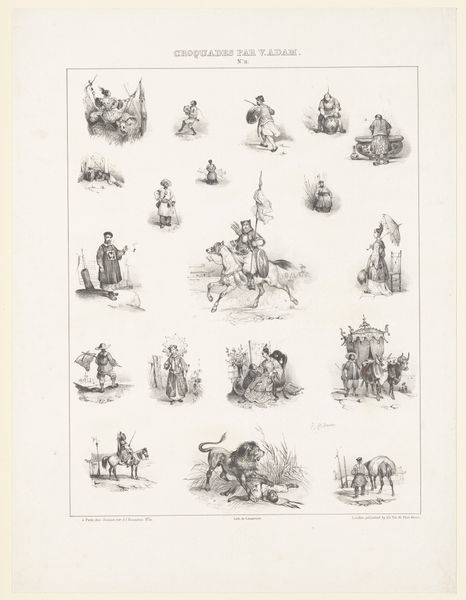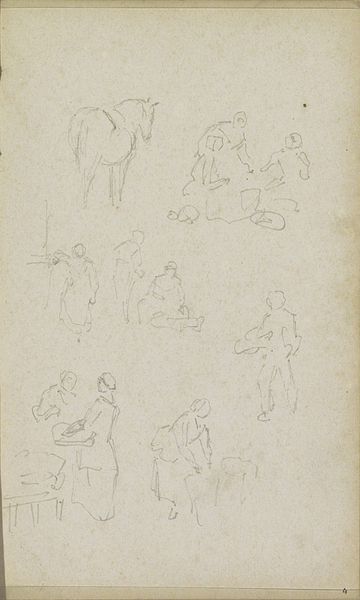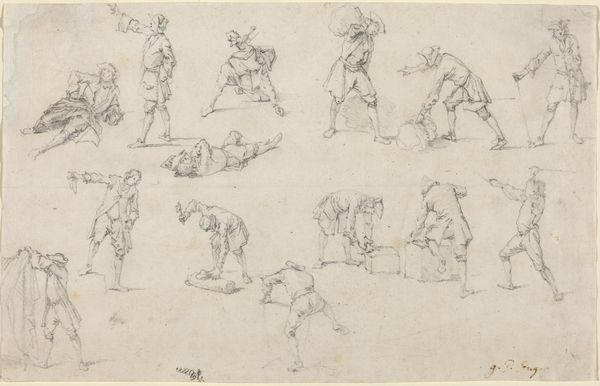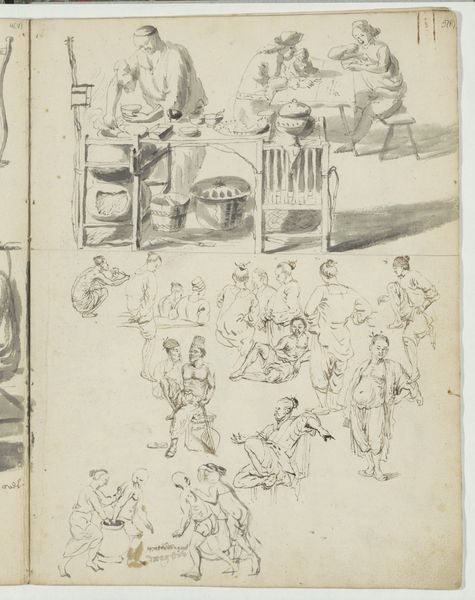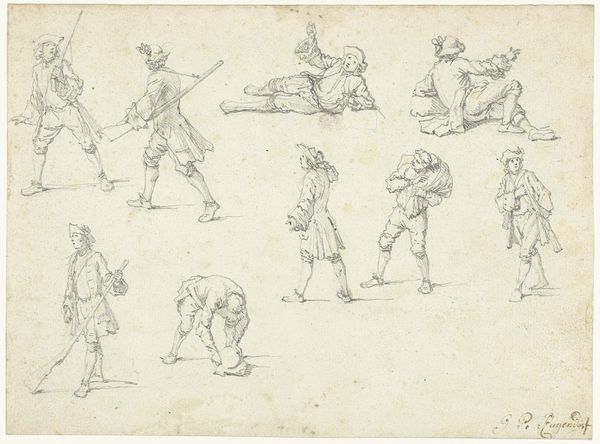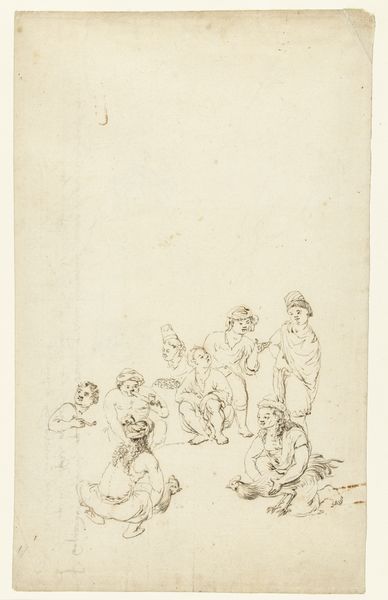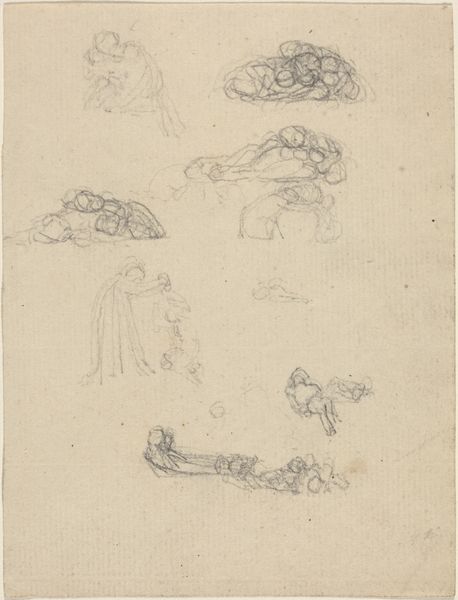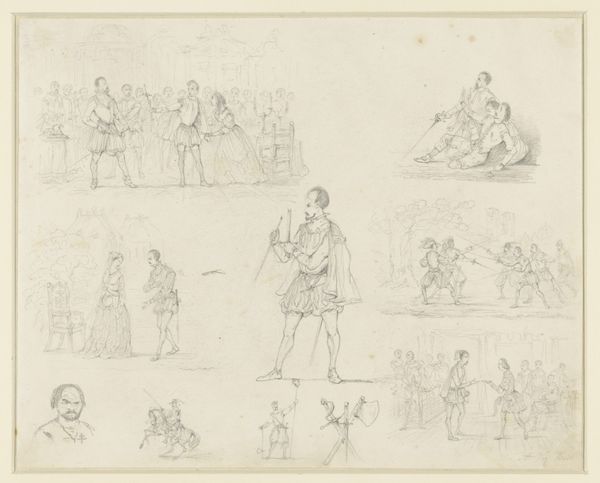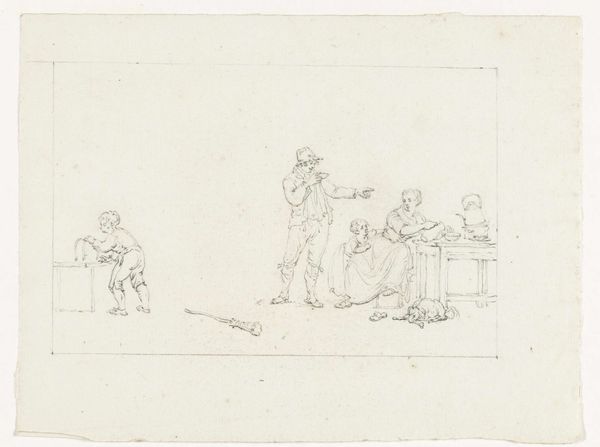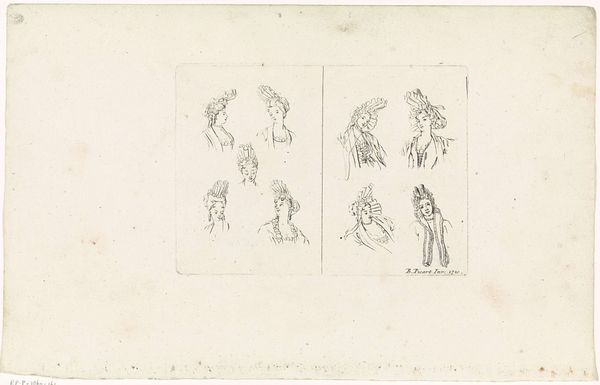
drawing, pencil
#
drawing
#
comic strip sketch
#
quirky sketch
#
figuration
#
personal sketchbook
#
idea generation sketch
#
sketchwork
#
ink drawing experimentation
#
romanticism
#
pencil
#
sketchbook drawing
#
genre-painting
#
storyboard and sketchbook work
#
academic-art
#
sketchbook art
#
initial sketch
Dimensions: height 190 mm, width 161 mm
Copyright: Rijks Museum: Open Domain
Editor: So, here we have "Studies van soldaten," or "Studies of Soldiers" by Pieter Bartholomeusz. Barbiers, dating from 1782 to 1837. It's a pencil drawing, and what strikes me is how raw and immediate it feels. Almost like a glimpse into a private sketchbook. What do you make of it? Curator: I see a fascinating document of artistic labor and the production of imagery related to military life. It begs us to consider the context: what kind of training or apprenticeship involved copying these poses? What function did these sketches serve, both for the artist and perhaps later, in the distribution or reproduction of military archetypes? Note the repetition of certain poses – seated on a barrel, wielding a weapon. It's almost like a proto-industrial approach to image making. Editor: Interesting! So you’re saying the seemingly simple act of sketching is actually connected to broader social and economic structures? The making of soldiers and the making of art related? Curator: Precisely. Think of the materials themselves – pencil and paper were becoming increasingly accessible. How did that influence who could create and consume images? This sheet may well be from a larger sketch book: imagine these as a practice not in 'high art' but for mass consumption perhaps. Where did Barbiers obtain the materials? The cost of paper at the time is important to consider. This simple sheet drawing is connected to burgeoning trade routes and mercantile consumption Editor: I never thought about a drawing this way, focusing on access to paper. That really reframes how I see this seemingly simple work. Curator: Exactly. By questioning the material conditions, we challenge assumptions about artistic genius and individual creation. How much freedom did the artist actually have when picturing solders in a militarized and regulated environment? Editor: Right! So much to think about beyond the individual figures and romantic narrative. Curator: It challenges a narrow focus of traditional analysis focused merely on style! It is really the materiality that drives its cultural value for historians like me. Editor: This makes me realize how much history is embedded within these artistic processes. Thank you!
Comments
No comments
Be the first to comment and join the conversation on the ultimate creative platform.
